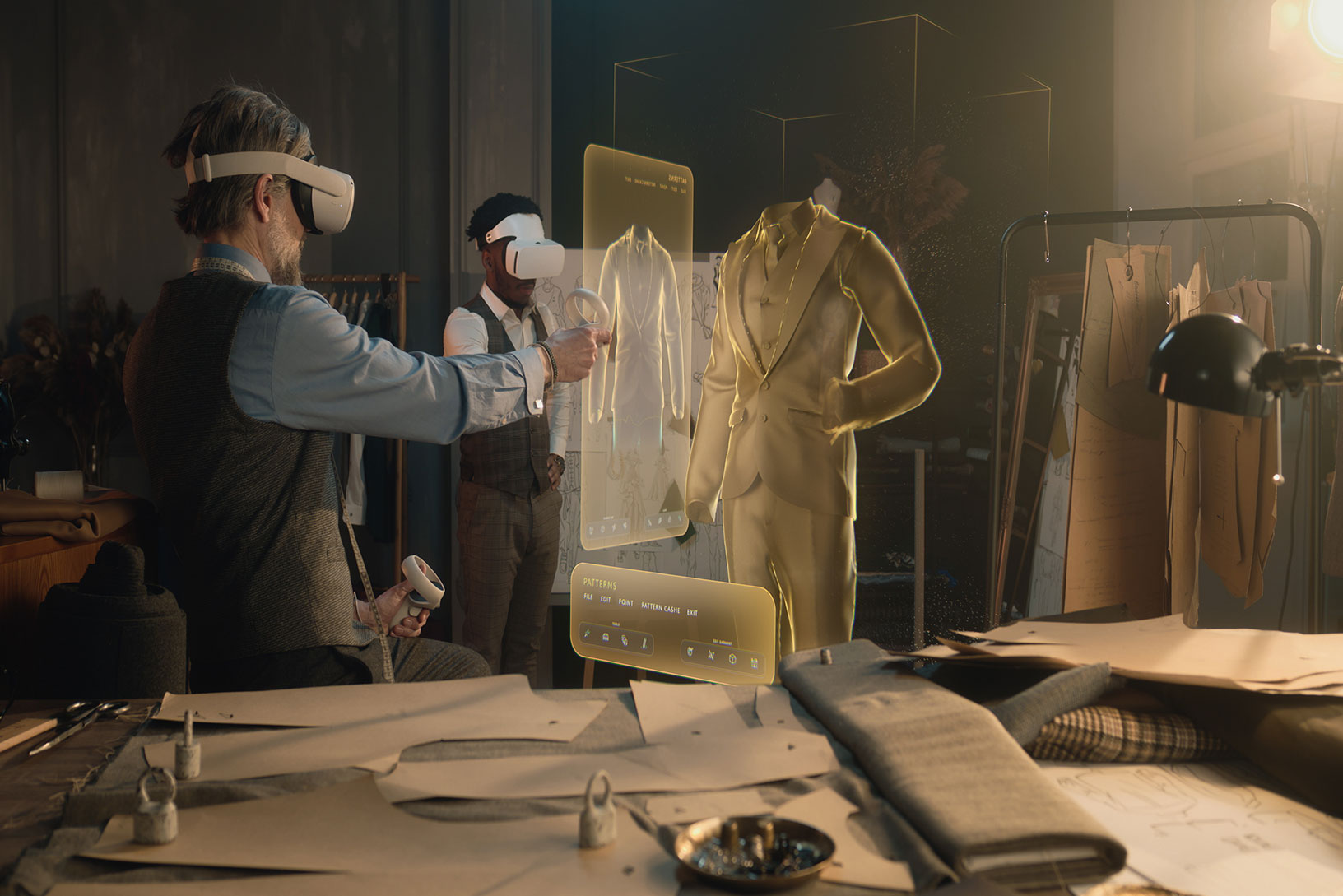Table of contents
In recent years, the fashion industry has consistently found innovative ways to keep up with technological advances. Digital fashion, or digital clothing, is one such groundbreaking development –and it has the potential to revolutionise the way we experience fashion. Let's dive in and discover what this exciting new direction is about.
What is digital clothing?
Digital clothing refers to virtual garments and accessories that can be worn on screens or in virtual environments. Unlike traditional clothing, it only exists digitally and can be visualised using technologies such as augmented reality (AR) or virtual reality (VR). Digital clothing can take the form of virtual outfits, jewellery and shoes. It allows users to customise their online identity and discover ways to express themselves beyond the physical world.
The methods behind digital apparel
The technology that brought digital clothing to life is based around different approaches. One commonly used method is 3D modelling, where virtual garments are created that can then be worn in AR or VR applications. Using special algorithms and simulations, these digital garments are realistically animated to mimic the way fabric moves and behaves. Advanced image recognition technologies also make it possible to combine digital garments with real images or videos, offering enormous potential for e-commerce.
The future of fashion
The introduction of digital clothing has the potential to radically reshape the fashion industry. One key factor is the ability to try on clothes virtually before buying them. As seen in our blog post about avatars in e-commerce, customers can try out different clothes and styles in a virtual environment, giving them a personalised and interactive shopping experience. This gives retailers new opportunities to showcase their products and influence customers’ purchasing decisions.
Digital clothing opens up entirely new business models for the fashion industry. Designers and brands can unleash their creativity, develop unique virtual collections and make them available worldwide. By removing the constraints of physical materials and production processes, fashion becomes more sustainable and accessible. Digital clothing sales can also generate new revenue streams. Fashion companies can license their virtual designs or even offer customised and personalised garments. This unlocks a huge range of opportunities for creativity, individuality and innovation.
Translation opportunities in the metaverse
The rise of the metaverse – a virtual reality where people can interact in digital worlds – has also created new opportunities for translation. People from different countries and cultures meet in this digital space to communicate and connect with each other. Effective translations are crucial to ensure that information, instructions and conversations run smoothly. Let’s take a quick look at some of the interesting ways translation will feature in the metaverse.
- Real-time translations: Chat platforms, voice assistants and even avatars could use speech recognition and translation technologies to simultaneously translate conversations in a range of languages.
- Digital clothing & localisation: Different cultures have distinct fashion preferences and styles. Translation services can make adjustments so that the digital garments meet those cultural needs. This can include adapting written copy, product descriptions and marketing materials to make the right impact and get the intended message across to multiple target markets.
- • Moderation and community management: Users interact with each other socially in the virtual communities in the metaverse. These virtual environments need to be moderated, and community management is important to maintain a safe and enjoyable space. Translation services can help monitor communication, translate content and use cultural sensitivity to avoid misunderstandings and conflicts.
The introduction of digital apparel into e-commerce and the metaverse marks an exciting turning point for the fashion industry. This new link between fashion and technology introduces fresh possibilities for individual expression, personalised shopping experiences and sustainable business models. At the same time, this development requires effective translation to establish smooth communication and interactions within the virtual environments. Our translation agency plays an important role in closing the gaps between the diversity of languages and cultures in the metaverse to create a seamless experience for all users. We can help you build bridges between the virtual worlds and create a global fashion industry in the metaverse with real-time translations, localisation and community management.
Request a quoteSabrina Baumgardt
